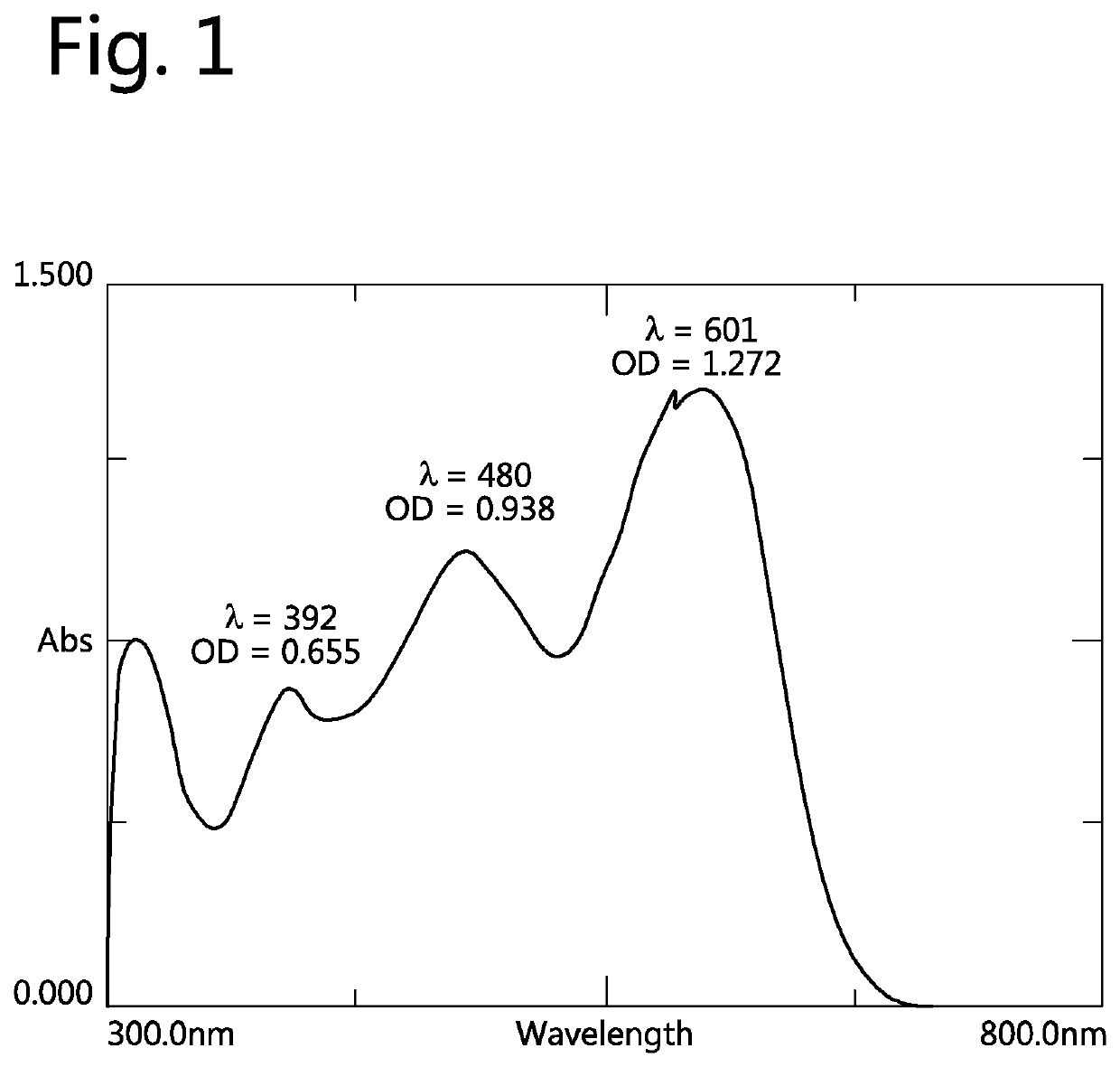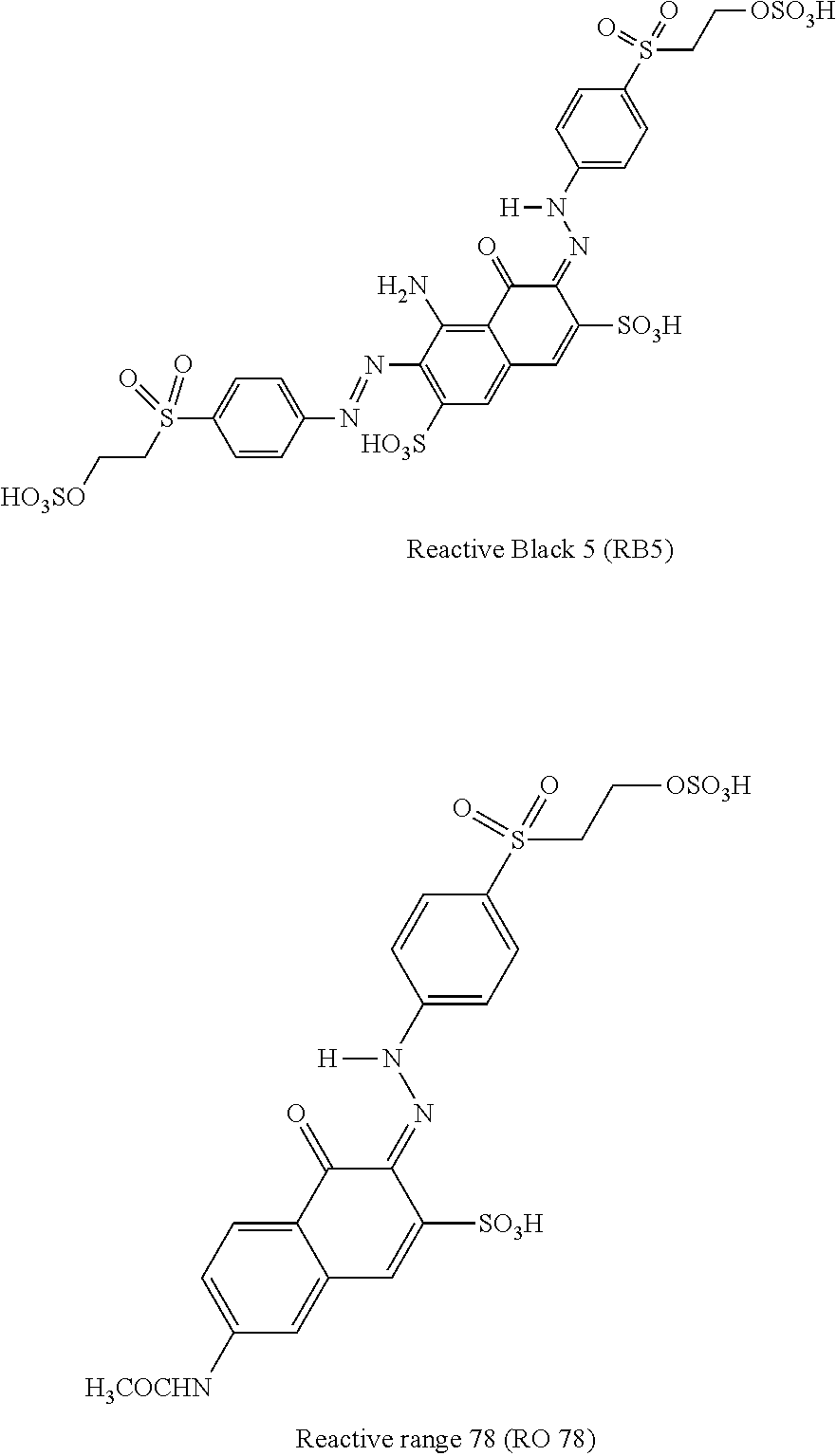One-pot synthesis of reactive deep black
a technology of reactive deep black and azo dye, which is applied in the field of one-pot synthesis, can solve the problems of large equipment and high water requirements, difficult preparation of concentrated solutions of azo dye, and inability to stir, so as to reduce the amount of organic impurities, reduce the amount of process steps, and reduce the amount of inorganic salt.
- Summary
- Abstract
- Description
- Claims
- Application Information
AI Technical Summary
Benefits of technology
Problems solved by technology
Method used
Image
Examples
example
[0044]To prepare a target Mixture of 0.1475 mole of Black 5 and 0.1 mole of Orange 78, vinyl sulphone parabase ester (115.5 g) was suspended in ice / water (1 1) and stirred at 0-5° C. whilst 37% HCl (80.2 g, 68 ml, 0.814 mole) was added. To this was then added a solution of sodium nitrite (28.0 g, 0.406 mole) in water (100 ml) over ˜15 min's at the same temperature, maintained through external cooling. The mixture was stirred for 1 h at 0-5° C. and then analyzed by HPLC, which showed no starting material remained, indicating complete diazotization had occurred.
[0045]Excess nitrous acid was quenched by the addition of sulfamic acid (1 g). H-Acid (59.1 g, 0.1475 mole) was suspended well in water (100 ml) and the suspension added to the above diazotization reaction. After 3 h stirring using a Silverson L5M-A high shear mixer at 0-5° C., paper run-out with diazo-PNA stain, indicated that all H-acid had been consumed.
[0046]The acetyl-J-acid slurry prepared in Step 1 (135 g, 0.1 mole) was ...
PUM
| Property | Measurement | Unit |
|---|---|---|
| molar ratio | aaaaa | aaaaa |
| temperatures | aaaaa | aaaaa |
| temperatures | aaaaa | aaaaa |
Abstract
Description
Claims
Application Information
 Login to View More
Login to View More - R&D
- Intellectual Property
- Life Sciences
- Materials
- Tech Scout
- Unparalleled Data Quality
- Higher Quality Content
- 60% Fewer Hallucinations
Browse by: Latest US Patents, China's latest patents, Technical Efficacy Thesaurus, Application Domain, Technology Topic, Popular Technical Reports.
© 2025 PatSnap. All rights reserved.Legal|Privacy policy|Modern Slavery Act Transparency Statement|Sitemap|About US| Contact US: help@patsnap.com



